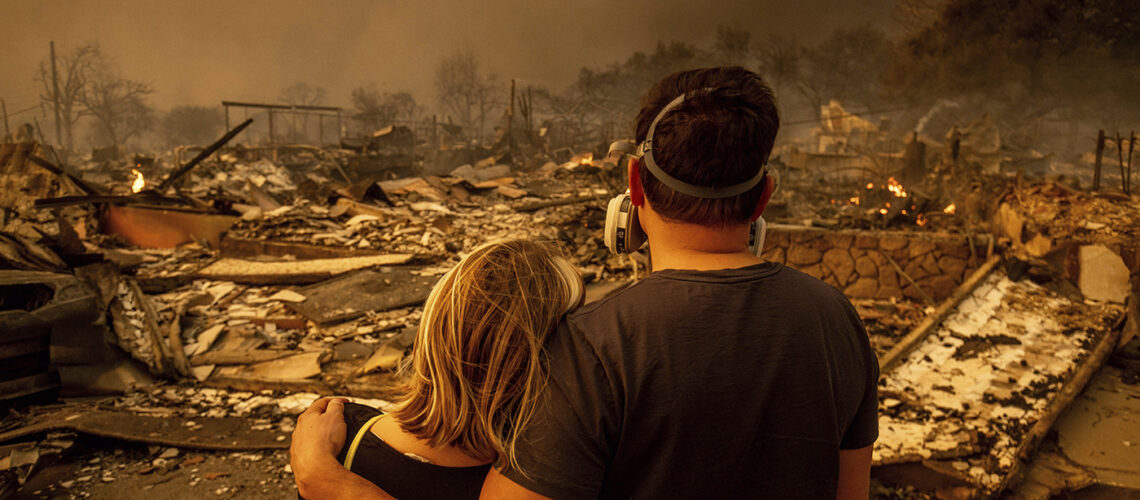What California’s Fires Mean for the Insurance Industry
January 10, 2025

- Roofing company barred from acting as insurance adjuster • Iowa Capital Dispatch
- New Proposal Would Require Insurance Agents To Disclose More About Medicare Advantage Plans
- Berkley Insurance gets approval for India branch office
- Commercial P&C Insurance Rates Increase 3.75% in 2024
- Insurance dispute between Anthem and St. Joseph Hospital could impact thousands
“I think we’re on the edge of a major financial crisis for the insurance industry,” says Daniel Aldrich, director of the university’s Resilience Studies Program and co-director at the Global Resilience Institute.
Bạn đang xem: What California’s Fires Mean for the Insurance Industry

As firefighters in California continue to battle multiple wildfires around Los Angeles, experts are sounding the alarm about a pending crisis in the insurance industry that would have enormous implications for the state’s recovery effort — and how homeowners rebuild.
“I think we’re on the edge of a major financial crisis for the insurance industry,” says Daniel Aldrich, a Northeastern professor, director of the university’s Resilience Studies Program and co-director at the Global Resilience Institute.
Xem thêm : Suspect in killing of US insurance CEO charged with murder as act of terrorism
Early estimates of insured losses from the Pacific Palisades fire are hovering around $10 billion, reports show. The total losses for Los Angeles are projected between $20 billion and $50 billion.
Since 2019, more than 100,000 Californians have been dropped from their insurance carriers as the region sees more frequent and intense wildfires, according to a San Francisco Chronicle analysis.
“What’s happened in California is, beginning well before these fires, State Farm and a number of other insurers there began to drop policyholders, saying — and this is about a year ago now — that their risks were too high for them to remain solvent in the state,” Aldrich says.
“Just to give you a feeling for what that means: out of the 12 major insurers in the state, at least five have pulled out completely or stopped writing new policies across the state,” Aldrich says. “That’s a big deal.”
California officials saw the writing on the wall, Aldrich says, and last year moved to modernize its FAIR Plan, a government-backed program often referred to as the state’s “insurer of last resort.”
Established after a series of wildfires in the 1960s, the FAIR Plan charges higher rates than private market insurers, and offers a “maximum payback” policy ($3 million for residential policyholders and $20 million for commercial policies per location) instead of a replacement policy.
There are now roughly 450,000 FAIR insurance policies across the state, more than double the number from 2020. According to the Los Angeles Times, every company in the state contributes to the plan’s expenses. (The Los Angeles Times also reports that the program is “dangerously overextended,” accountable for roughly $300 billion with only $200 million in surplus coverage.)
Editor’s Picks

Trump’s comments on Greenland, Panama and Canada are “unprecedented,” international relations expert says. What do they mean for America’s future abroad?

How Yizhi You’s quantum research could revolutionize computing and STEM education

What is HMPV, the cold-like virus circulating in China?

As grad student, Northeastern co-op helps Bay Area startup develop device to prevent toxic algae blooms

From design to reality, how the makerspace is empowering student innovation on Northeastern’s Oakland campus
It will be a challenge to rebuild
Should loss claims exceed FAIR’s reserves, those private insurers still operating in the state will step in to cover the first $1 billion in shortfall. But Aldrich notes that, even if the FAIR program is able to reimburse its policyholders, homeowners are facing an uphill battle to build.
“We’ve had 10,000 homes so far that we know have burned down in the Palisades, at a payout value of only $3 million per home,” Aldrich says. “Let’s say that California FAIR actually manages to pay out these insurance policies. The rebuilding cost is going to be much more than that $2.5 to $3 million.”
Aldrich continues: “Why is that? Because, post-shock, the labor market and the materials markets get slammed; many homeowners in the Palisades are going to want to rebuild their home in the next few years, which means every contractor is going to be tapped. This is what happened in New Orleans in the aftermath of Katrina. So the prices of labor and the prices of materials like wood and steel will shoot up through the roof.”
Xem thêm : Sapiens to Participate in the 27th Annual Needham Growth Conference on January 15, 2025
Aldrich says California is bracing for another kind of disaster in the coming days.
“As the reality of the damage starts to become clear, we may see some catastrophic failures — both from pullouts of firms still in operation, and also bankruptcies and failures altogether,” Aldrich says. “We saw hundreds of local small firms across Louisiana go bankrupt after Katrina because they simply weren’t prepared to offer payouts from the damage.”
Should not be a surprise
There are no easy answers for how to mitigate the effects of these disasters, Aldrich says. It begs the question: should human beings be building in such disaster-prone areas to start with?
Joan Fitzgerald, a Northeastern University professor of public policy and urban affairs, argues that we should not.
“That this happened shouldn’t have surprised anyone,” Fitzgerald says. “That Miami beach floods all the time shouldn’t surprise anyone. The fact is, we’re building in places that we shouldn’t have built out in the first place.”
Amid accelerating natural disasters brought on by climate change, the insurance industry is having to confront a new calculus. Insurance rates across the country have risen in response to climate change; despite this, California’s rates have typically remained below average compared to states like Florida and Texas.
Last year alone, natural disasters across the globe — including earthquakes in Turkey and Syria, and wildfires in Hawaii — resulted in approximately $100 billion in insured losses, according to Reuters.
“It’s human hubris that we can ignore mother nature,” Fitzgerald says. “My view isn’t about how to rebuild to be more resilient, but how to think about whether there are places that we can’t — or shouldn’t — rebuild. And the Palisades, specifically, is one of those completely vulnerable areas. That much we know ahead of time.”
World News
Recent Stories
Nguồn: https://propertytax.pics
Danh mục: News

